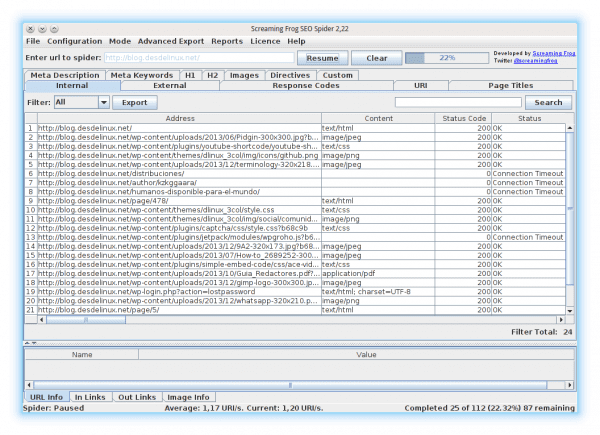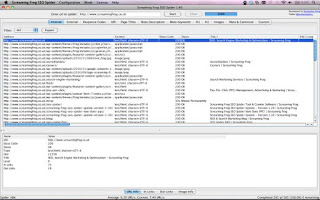


You can view the rendered page the SEO Spider crawled in the ‘Rendered Page’ tab at the bottom of the user interface when crawling in JavaScript rendering mode. There’s now an extra column under the ‘hreflang’ tab, for ‘Sitemap hreflang’ which allows users to audit for common issues, such as missing confirmation links, incorrect language codes, not using the canonical, and much more. The SEO Spider already extracts, crawls and reports on hreflang attributes delivered by HTML link element and HTTP Header, and will now for XML Sitemaps in list mode as well. John Mueller discussed this in a Google+ post last year. The search engines and browsers will only request the HTTPS version, so obviously the 307 response HSTS policy should not be considered as a real temporary redirect and ‘a redirect to fix’. The SEO Spider will request the HTTPS version as instructed, but highlight this with a 307 response (inline with browsers, such as Chrome), to help identify when HSTS and insecure links are used (rather than just requesting the secure version, and not highlighting that insecure links actually exist). If any ‘insecure’ links are discovered in a crawl with a Strict-Transport-Security header set, the SEO Spider will show a 307 response with a status message of ‘HSTS Policy’. HTTP Strict Transport Security (HSTS) is a server directive that forces all connections over HTTPS. Meta Refreshes are now also included within this area and treated in a similar way to regular server-side and client-side redirect reporting. While not strictly speaking a response code, they can be viewed under the ‘Response Codes’ tab and ‘Redirection (JavaScript)’ filter. The SEO Spider was the first commercial crawler with JavaScript rendering, and this functionality has been advanced further to help identify client-side redirects, which is another first. The SEO Spider will now discover and report on JavaScript redirects. The custom configuration profiles are saved within your user directory, so you can also copy and share your favourite profiles with colleagues for them to load and use. There isn’t a limit to the number of profiles, you can create as many as you like. Hence, you are now able to create multiple custom configuration profiles and seamlessly switch between them. You can already adjust and save your configuration to be the default, however, we know users want to be able to switch between multiple set-ups quickly, depending on the crawl type, client or objective. So you can pull in Moz metrics such as Page Authority, Domain Authority, or Spam Score and lots more.
#Screaming frog seo spider v8 free#
Moz is the only tool with a free (slower, and limited API), as well as a paid plan, which you can select and allows requests to be super fast. The SEO Spider will calculate the API usage of pulling data based upon your API plan (where possible via the API), and can even combine link counts for HTTP and HTTPS versions of URLs for Majestic and Ahrefs to help you save time. Each of the tools offer different functionality and metrics from their APIs, and you’re able to customise what data you want to pull in. You will be required to have an account with the tool providers to pull in data using your own API credentials. We’ve now also introduced an ‘API’ tab into the right-hand window pane, to allow users to keep an eye on progress. When you have connected to an API, link metrics will appear in real time, under the new ‘Link Metrics’ tab and in the ‘Internal’ tab, so they can be combined with all the usual crawl and analytical data. This has been a much-requested feature and is extremely useful for performing a content audit, or quickly bulk checking link metrics against a list of URLs.

You can now connect to Majestic, Ahrefs and Moz APIs and pull in external link metrics during a crawl. And, it still stays true to its fairly retro styling.Īs you can see, it’s a little more modern and has splashes of colour, but now also takes advantage of new technologies in the updated framework, and works with HDPI monitors by default. However, please don’t panic – it retains the core usability and data led functionality of what made the interface loved by users. The SEO Spider has ruined many an SEO’s slide deck over the years, with its retro (yet, beautifully functional) user interface, and we felt it was finally deserving of an update. Our team have been busy in development working on some exciting new features, so let’s get straight to it, and talk about what’s new in version 8.0. I’m excited to announce the release of Screaming Frog SEO Spider 8.0, codenamed internally as ‘All J’s must go’.


 0 kommentar(er)
0 kommentar(er)
